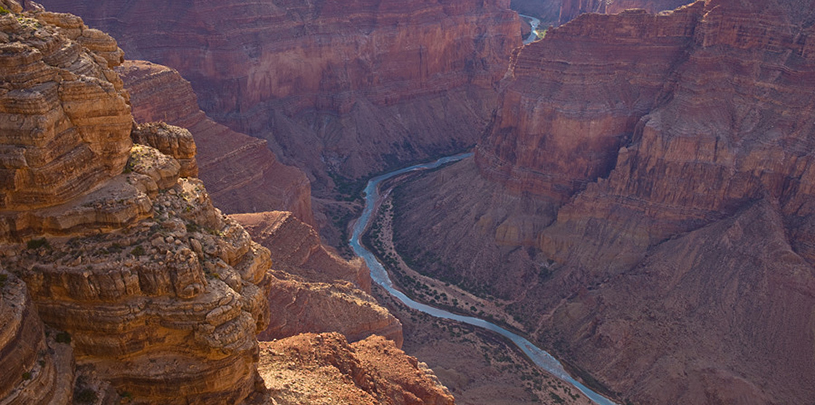
 by Roger Clark, Grand Canyon Director
by Roger Clark, Grand Canyon Director
Now that we’ve recovered from last fall’s heart-stopping news about damming the Little Colorado River, let’s look at the Department of the Interior’s analysis of how the proposed hydroelectric projects could impact the Grand Canyon.
In case you missed it, a Phoenix-based company has applied to the Federal Energy Regulatory Commission (FERC) to initiate feasibility studies for two proposed projects that would dam the Little Colorado River, the Grand Canyon’s largest tributary, near its confluence with the Colorado River.
Both projects would punch dams — and associated pumps, generators, transmission lines, and roads — into one of the most biologically important and traditionally significant places in the Grand Canyon. And they would have far-reaching effects on the entire river system below the proposed dams.
Interior’s comments, which include contributions from the U.S. Fish and Wildlife Service, Bureau of Indian Affairs, and National Park Service, are, in essence, a precautionary gauntlet of provisions that must be met prior to FERC permitting the dam projects to proceed. The federal agencies flagged risks to water resources, wildlife, and tribal interests.
The proposed dams would create major changes in the Little Colorado River and adversely affect Grand Canyon National Park and the Colorado River below the confluence, including:
The dams would eliminate much of the spawning and rearing habitat for the endangered humpback chub and create barriers to fish movement.
 Photo by Jack Dykinga
Photo by Jack Dykinga
READ: Little River, Big Consequences ›
"If you’re going to look at and design a project that would effectively eliminate humpback chub from the Little Colorado River, it would be hard for me to think of a better project to design if that were my objective," said Kirk Young with the U.S. Fish and Wildlife Service. The dams would restrict sediment flows and shrink beaches and backwaters that support insect, amphibian, fish, bird, and mammal diversity throughout the Grand Canyon.
Because the proposed projects would be located on the Navajo Nation and within recognized cultural places, the United States has a unique trust responsibility to tribes to ensure that their natural and cultural resources are respected and protected. There are at least 10 tribes that have aboriginal and current connections to the Little Colorado River, which cultural leaders and tribal nations believe to be part of the Grand Canyon and that the Bureau of Reclamation has determined to be eligible for designation as a Traditional Cultural Property under the National Historic Preservation Act.
Additionally, the dams could:
READ: Tribes Oppose New Dams Near Grand Canyon ›
Interior’s comments are bolstered by complementary motions to intervene, submitted by a coalition of unified communities. The Navajo Nation, Hopi Tribe, and other Grand Canyon-affiliated tribal nations have spelled out what’s at risk if these dams were built on the Little Colorado River. So too has the Grand Canyon Trust and many others.
The Department of the Interior directs the projects’ applicants and FERC to consult and coordinate with the Fish and Wildlife Service, National Park Service, Reclamation, Bureau of Indian Affairs, and all affected tribes as required by federal law.
Given that FERC is currently taking about six months to review and approve uncontested applications for similar feasibility studies, we might expect that it will take considerably longer to act on the Little Colorado River project proposals.
Or, we might hope to see a swift decision to deny the applications because they are fundamentally bad ideas that clearly conflict with ancient and contemporary mandates to protect the Grand Canyon in perpetuity.
The Colorado River below Glen Canyon Dam is heating up. Find out why.
Read MoreGroundwater pumping at a uranium mine near the Grand Canyon will affect the canyon's springs, scientists says.
Read MoreArizona Governor Katie Hobbs is the latest elected official to call for an environmental review of Pinyon Plain uranium mine.
Read More